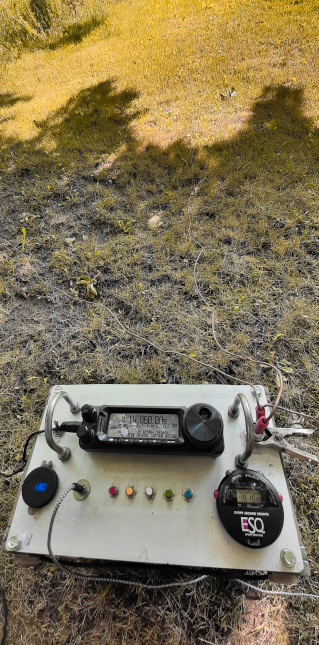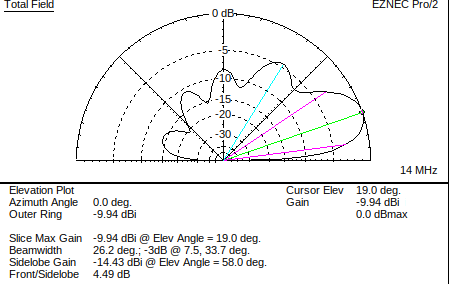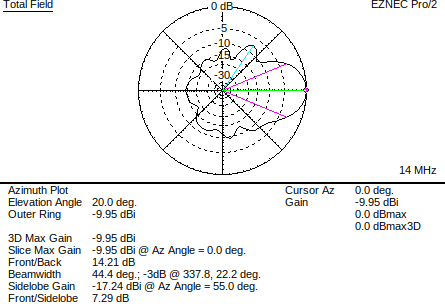One of my local stores was offering 100ft reels of 16ga insulated wire on sale for a good price. I have bought this wire before and was very pleased with its flexibility – an important factor for field portable use where the antenna is subjected to constant winding and unwinding.

I bought two reels; that’s 200ft. Then a random thought popped into my head. Two hundred feet is approximately three wavelengths on the 20-meter band. I keep a notepad in my shack for recording ideas, so I made a note to myself: “maybe worth trying a Grasswire antenna again”.
I have posted about Grasswire antennas before. The concept of laying an antenna wire directly on the ground sounds crazy but it is actually very practical and has been proven many times over especially by K3MT (a web search will give you several accounts of his highly successful Grasswire trials from Bermuda).
Yes, an antenna wire laid directly on the ground is very lossy, but the losses are compensated by the highly directional signal beam (see diagrams below).
“But who has the space to lay out 200ft of wire?” you may ask. My home is on a generous suburban lot but I still had to lay out my Grasswire with the last 60 feet at a right angle. For field portable operation, it is usually easy to find a trail, or park with more than enough space to lay down 200 feet of wire.

Let me stress that this was an experiment. I won’t be using my 200ft Grasswire on a regular basis. Having a license to transmit radio signals means (to me) a license to explore radio technology and try out new ideas.
I soldered the two 100ft reels of wire together and stretched them out in my backyard. The wire was then directly connected to the antenna jack on my field portable radio set. There was no coax involved; no ununs, baluns or transformers. For this improvised trial I laid out two 13ft ground radials and set my Yaesu FT-891 to 30 watts CW and keyed up. My recently upgraded auto tuner (now an LDG Z-11 Pro) easily found a match so I was good to go.

I tuned around the band and heard several signals. Then one particular station in Kentucky caught my attention. Dave (Des) N4IN was activating K-1267 My Old Kentucky Home State Park. When I heard him sign with a hunter I quickly threw out my callsign and was very pleased when I received a response.
N4IN was an easy 599 for me and he gave me a 539 report. I have had worse reports using my best field portable antennas so I was very happy.

EZNEC says my 200ft Grasswire antenna has a loss of nearly 10dB so my effective radiated power was only 3 watts. But consider this. My 3 watts was being propagated in a beam 45 degrees wide.

If I had been pushing 30 watts into a quarter wave vertical antenna, with an omnidirectional propagation pattern, the portion of power radiated over that 45 degrees would be just about the same 3 watts!
An important point to note here is that a Grasswire antenna must be at least one wavelength long. When the wire length is multiple wavelengths, the radiated signal becomes more focused. There is a lot of theory behind why this happens. If you would like to read a simplified explanation please check out my post entitled: “A Most Unusual Antenna” https://hamradiooutsidethebox.ca/2021/09/13/a-most-unusual-antenna/.
I had a similar experience during the 2004 Michigan QSO Party. A squirrel had chewed through my support line and left my long wire antenna on the ground. On a whim I fired up the FT-817 and found that the wire on the ground loaded up well. I didn’t operate for too long but made 12 QRP QSOs during the contest.
LikeLiked by 1 person